Requirement #3 - Convey a Clear, Simple Meaning
A traffic control device must convey a clear, simple meaning.
Color
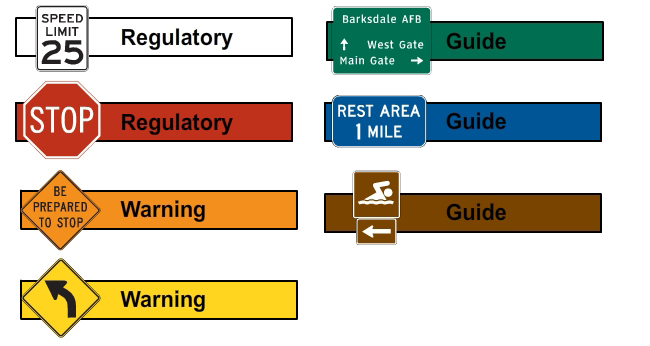
The purpose of a sign is to give information to passing motorists. Signs communicate a message with their color, shape, and legend. A rainbow of colors and a variety of shapes are used to communicate the meaning of traffic signs. The colors and shapes are used to reinforce the messages conveyed by signs.
Regulatory
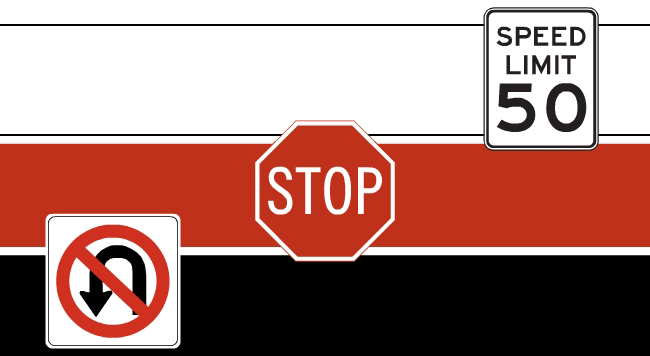
Regulatory signs generally use red, white, and black colors to convey their purpose. Red is used to indicate that vehicles do not have the right-of-way, like a STOP or YIELD sign; are prohibited from entering a roadway like a DO NOT ENTER or WRONG WAY sign; or are prohibited from making a maneuver like a U-turn prohibition sign.
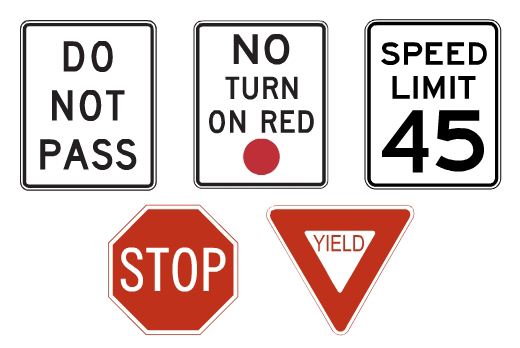
Black letters on a white background are used for all other regulatory signs. Most regulatory signs are square or rectangular except for STOP signs, which are octagonal, and YIELD signs, which are equilateral triangles with one point straight down. The unique shape of STOP and YIELD signs make them universally recognizable.
Warning
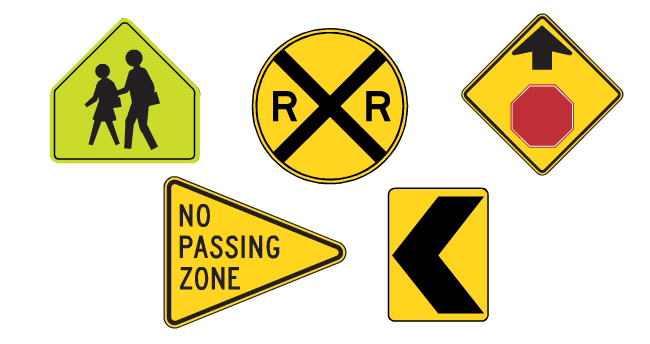
Warning signs typically use a yellow background with black letters or symbols to convey their purpose. Most warning signs are diamond-shaped and use symbols to indicate the nature of the potential hazard. Symbols are preferred for warning signs, however symbols not officially approved by FHWA may not be used.
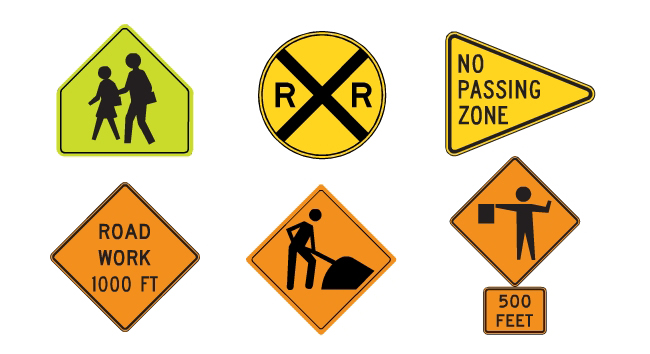
There are three special shapes used for warning signs. A pentagon is used to warn of a school zone. The pennant shape is used to indicate the beginning of a no passing zone. A circle is used to warn of an approaching railroad crossing. There are also some cases when special colors are used. All pedestrian- related signing may use the fluorescent yellow- green color to draw more attention. School zone crossing signing must use this color. Signing for temporary hazards or in construction zones use an orange background with black letters or symbols.
Guide Signs
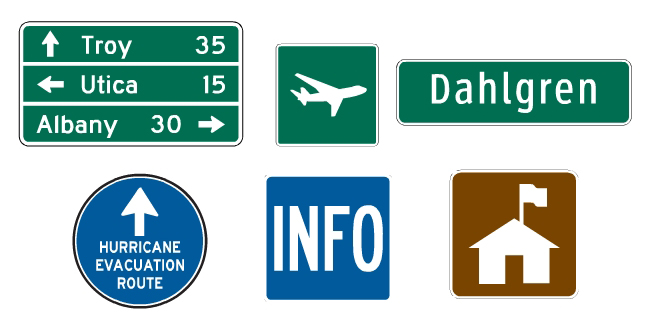
Guide signs use white letters on different colored backgrounds to convey their purpose. Most guide signs have green backgrounds. Signs with green backgrounds help direct motorists to places along the road or to destinations of general interest. Signs indicating the location of roadside services have blue backgrounds. Signs with brown backgrounds indicate the locations of areas of recreational or cultural interest. Generally, most guide signs are square or rectangular in shape.
Symbols
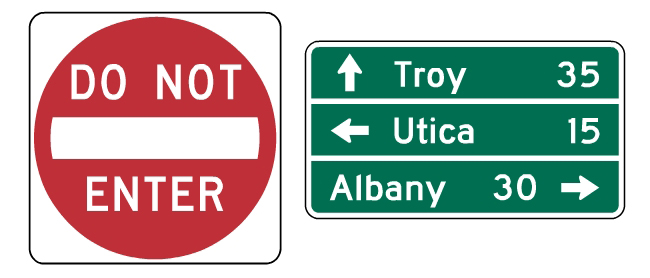
Symbols should be used on warning signs when they are approved by FHWA. Words should be used on signs when there is not a standard symbol. Destination names should always be shown in words. When the visual appearance, installation location, and specific application of a particular traffic control device are all uniformly applied, motorists develop a "glance" recognition of the device, enhancing response time. This uniformity is acquired through the use of the MUTCD.
Text Messages

When word messages are used on signs, they should conform to the Standard Alphabets for Highway Signs, published by FHWA. This publication outlines the size of each letter and the appropriate spacing of letters for use on sign panels. These alphabets are also shown in SDDCTEA Pamphlet 55-14.
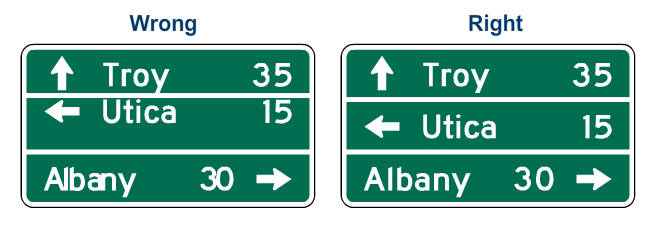
Standard Alphabets for Highway Signs includes a series of six standard alphabet stroke widths, along with tables specifying the proper spacing of letters and numerals. These standards have been designed to provide a highly legible message, and therefore should be followed for ALL sign installations.


